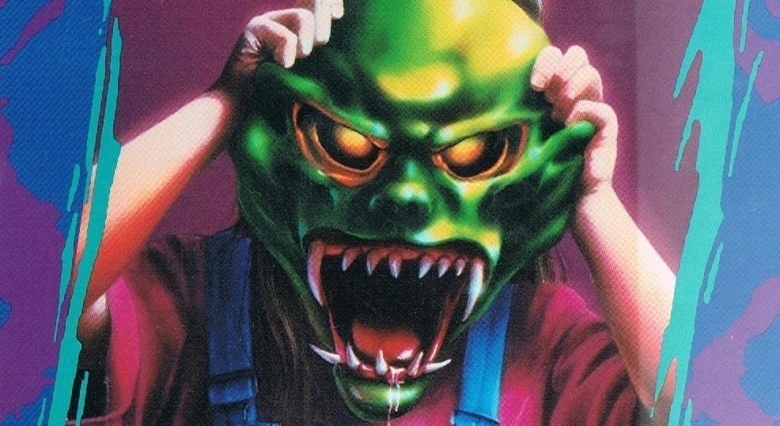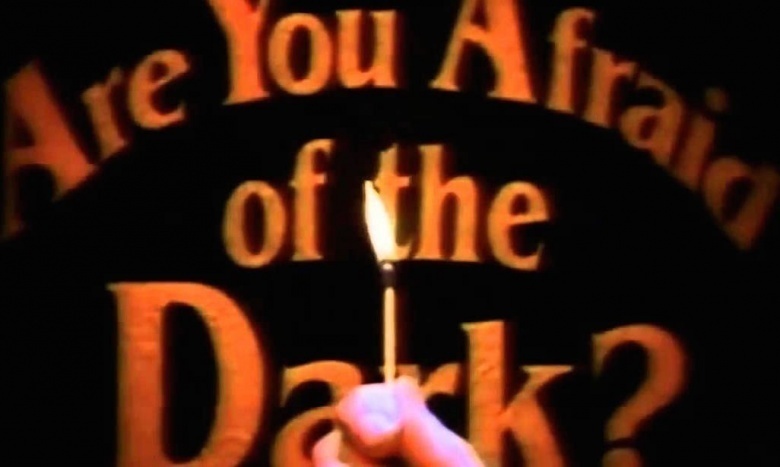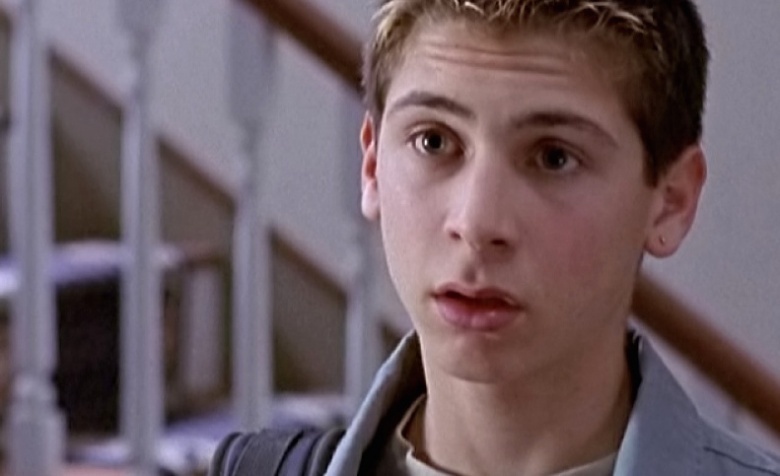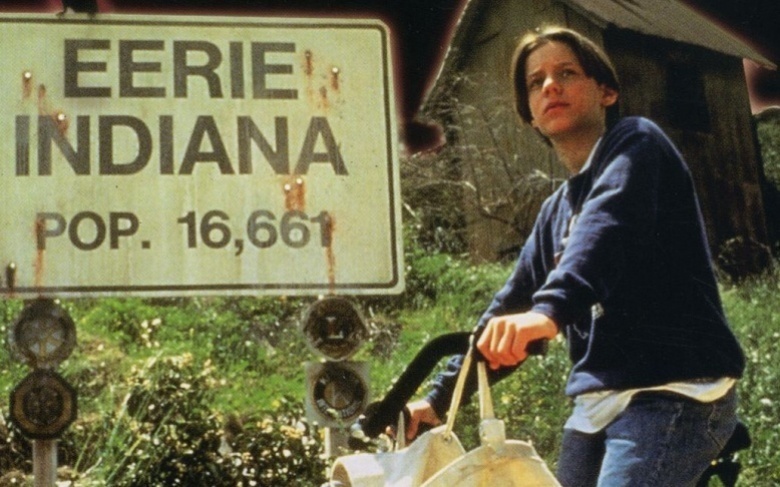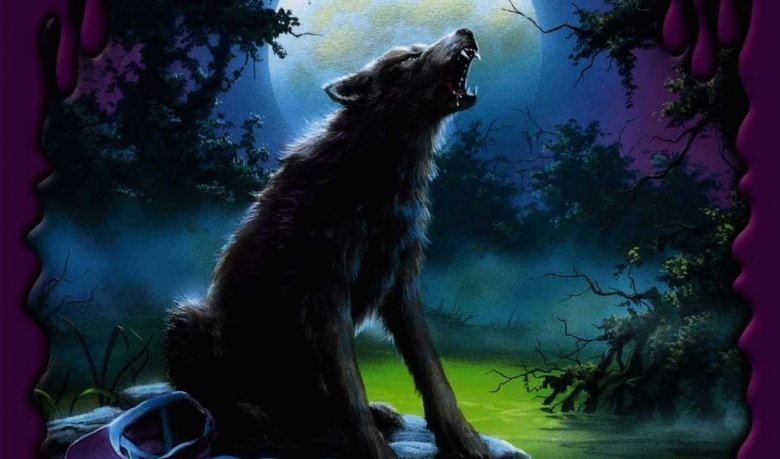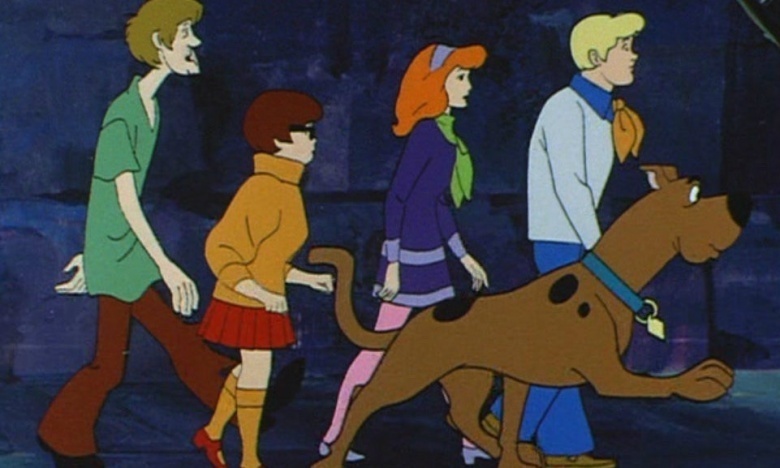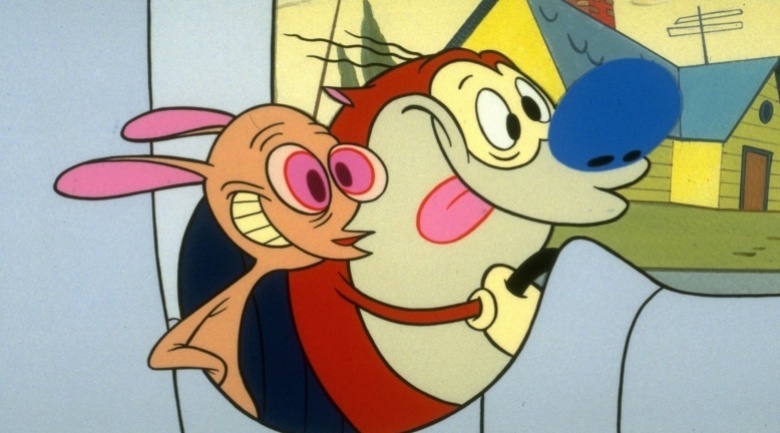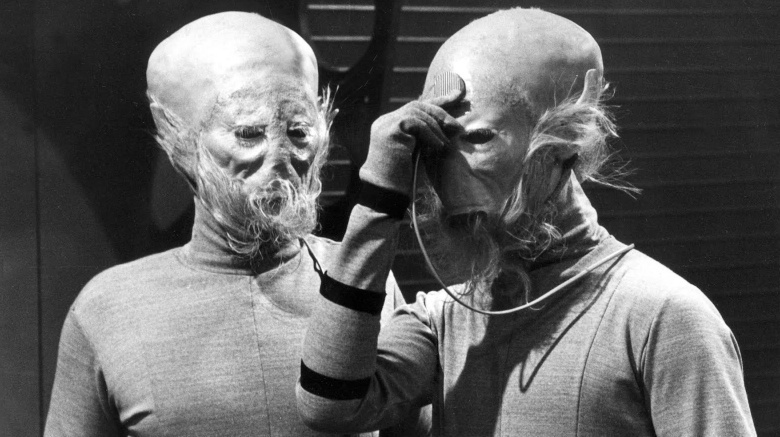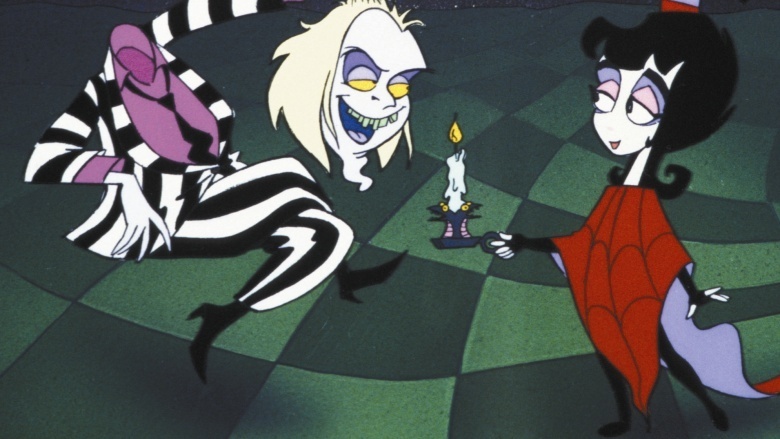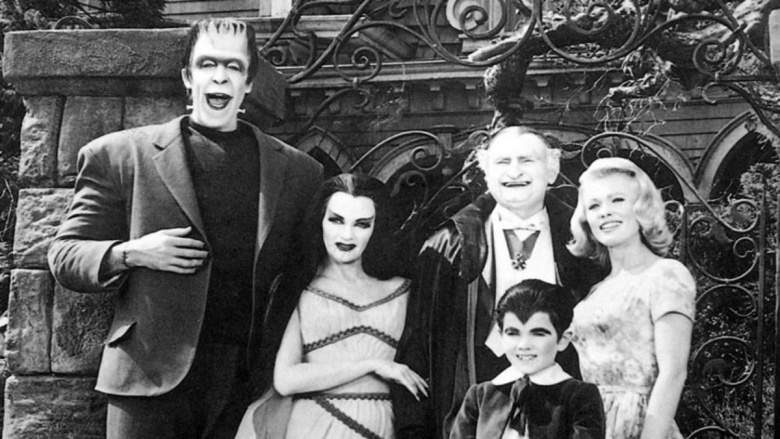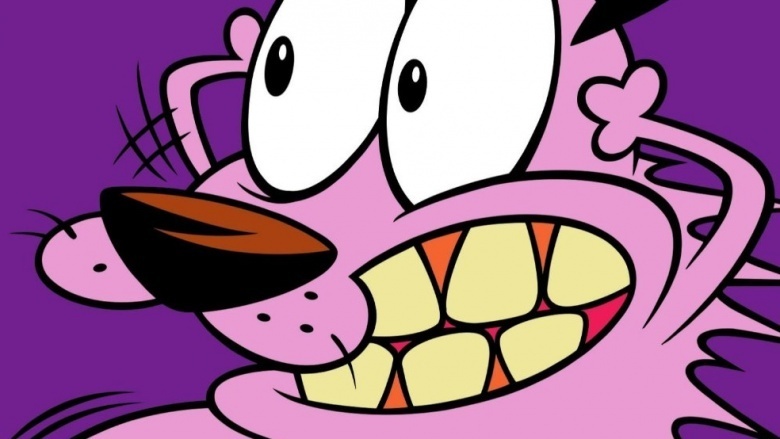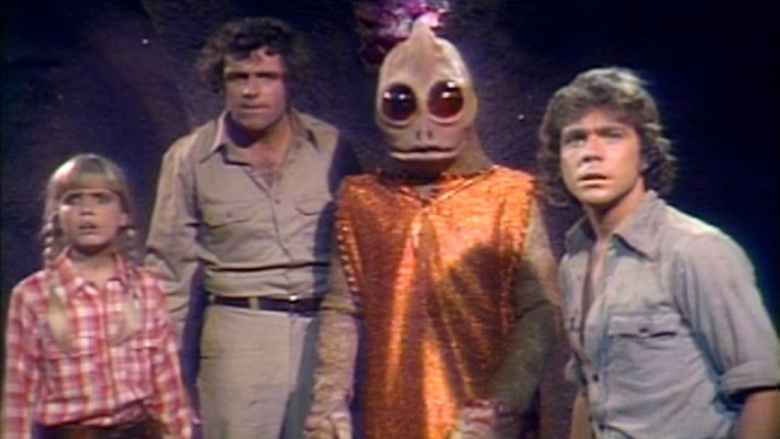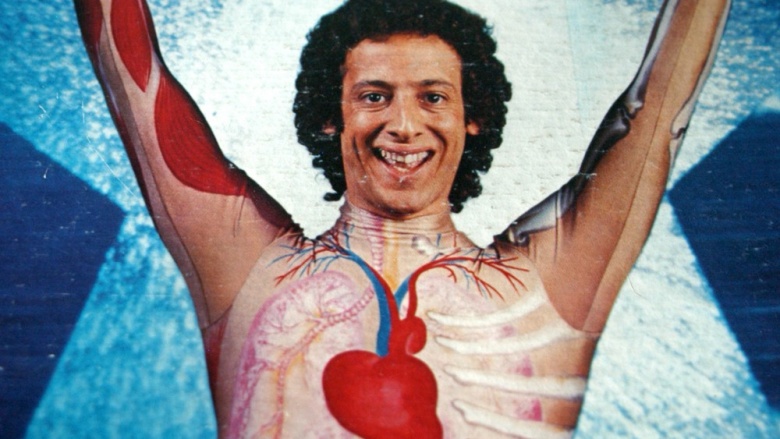TV Shows That Gave Us Nightmares As Kids
Parents nowadays are too diligent to let their kids happen upon some of the scary stuff we saw on TV as kids. That's not to say that our parents didn't care, but just in general, moms and dads today are a bit more neurotic. Go back and watch some of the television you enjoyed as a kid, you might be surprised to rediscover the stuff networks like Nickelodeon, CBS, and NBC geared toward the younger demographic. There's a rich tradition of kids' shows serving up nightmare fuel, and with this feature, we're paying respect to some of the most memorable entries in that creepy subgenre.
Are You Afraid of the Dark? (1990-2000)
Are You Afraid of the Dark? was arguably every kid's favorite scary show in the '90s. Quite a few memorable episodes featured nightmare-inducing moments, like "The Tale of the Pinball Wizard" (which kept us away from arcades for a few years) and "The Tale of the Dark Music," which taught us to be afraid of small spaces and the dark. Even watching it today, there are some pretty scary concepts you'd see in horror movies (albeit obviously dialed down for TV). New neighbors actually being aliens, the old lady down the road being a witch, little ghost children—these terrors and more can all be found in Are You Afraid of the Dark?
The Nightmare Room (2001)
Basically, The Nightmare Room served as the WB's version of Are You Afraid of the Dark? with a splash of The Twilight Zone, and it was occasionally just as scary as either. Some of the episodes were truly terrifying, like one episode in which a frequent liar is told by his evil twin that he'd die in two days. Many of the episodes dealt with ghosts and haunted things, but the really scary stuff involved kids being told they were going to die (in one instance, by a diary that predicted the future). The Nightmare Room was always a bit scarier than AYAOTD, but it wasn't watched by as many kids. Fun fact: The Nightmare Room was narrated by Uncle Phil (James Avery). Unfortunately, the show proved short-lived, only lasting one season.
Eerie, Indiana (1991-1992)
Eerie, Indiana wasn't on long, but during its one-season run, we couldn't stop watching (albeit sometimes between the fingers covering our eyes). It was delightfully scary, feeling like an X-Files for kids—except it didn't leave much of the horror behind. Many of the episodes revolved around urban legends like Bigfoot and other strange beings. There was one episode in which the character Marshall got a magical retainer that allowed him to read dogs' minds. Things like that just made the show so weirdly scary, yet awesome.
Goosebumps (1995-1998)
Remember reading the Goosebumps series and getting too scared to keep turning pages? Goosebumps had quite a few scares in the television show, too. The creepiest part of the series' concept was Slappy, an evil ventriloquist dummy that was basically like a sinister version of Pinocchio. Slappy was always looking to enslave someone, usually the child that brought him to life by uttering a phrase he kept in his pocket. As if that wasn't scary enough, the doll's body was created out of coffin wood by an ancient sorcerer that gave him his powers. He served as the frequent baddie in Goosebumps—like the Joker to Batman.
Scooby Doo, Where Are You! (1969-1971)
Let's just take a minute to be thankful that Scooby Doo, Where Are You! wasn't a live-action horror TV show, because it only would have given us more nightmares. Even as a cartoon, Scooby-Doo had quite a few fear-inducing episodes, the scariest of which was arguably "The Harum Scarum Sanatorium," which places the gang in the middle of nowhere during a thunderstorm and forces them to seek sanctuary in a sanitarium...or so they think. Really, the building was ghoul-filled and terrifying. Other scary ideas from the Scooby Doo, Where Are You! series included ghost clowns and faceless zombies. No thanks, Scooby—we'll go back to watching The Jetsons.
The Ren & Stimpy Show (1991-1996)
There were quite a few Ren and Stimpy episodes that gave us nightmares as kids. That might seem ridiculous, but the show had a lot of creepy imagery, and at the time that wasn't common in kids' shows. For one, we had no idea what the hell Ren actually was (a dog? A rat? A weasel?), and that alone was enough to give us an uneasy feeling. Also, you'll notice some weird stuff going on in the show, like extreme close-ups of Ren's bloodshot eyes, talking bugs, Ren with no eyes, and Stimpy breastfeeding. It was all pretty weird for kids, which led to quite a few restless nights. Not that the show wasn't great—because it was—but going back and watching it now, it still feels more like a drug-infused animated odyssey than kids' entertainment.
Doctor Who (1963-'89)
Today, the British science fiction series Doctor Who enjoys critical acclaim to match its excellent production values and its high caliber of talent in front of the cameras (including much-awarded actor Peter Capaldi) and behind the scenes (showrunner Steven Moffat also runs Sherlock). In the U.K., it's usually aired in an early evening Saturday time slot, specifically so kids can watch. But it wasn't always so family-friendly. The show first aired in 1963, and hit its stride in the '70s and '80s, when Tom Baker starred as the titular "Time Lord." Back then, the BBC series looked like the taxpayer-funded production that it was—which is to say low-budget, with episodes often taking place in one room, and guys in cheap suits portraying aliens and monsters. Still, the show's deadly serious tone, combined with creatures who spoke in thick British accents, made the show exotic, especially when it aired on local PBS stations late at night. For kids who snuck out of their bedrooms to see what their parents were watching, lured out by the show's incredibly unsettling synthesizer theme song, what they found was nightmare fuel from across the pond.
Beetlejuice (1989-'91)
Not long after Tim Burton's comic-horror masterpiece about the "ghost with the most" arrived in theaters, the cartoon version of Beetlejuice made the leap to TV screens, both on Saturday mornings and in afterschool timeslots. While the movie focused on two ghosts (played by Alec Baldwin and Geena Davis) trying to get a living family out of their house (including Lydia, the goth teenage daughter portrayed by Winona Ryder), the cartoon centered on the relationship between Beetlejuice and Lydia. That meant making excursions into something called "the Neitherworld," which was more or less the realm of the dead. Spooky and unsettling, it was a checkered land of monsters, physical impossibilities, and dead things. Think Wackyland from the old Warner Bros. cartoons, crossed with Purgatory.
The Munsters (1964-'66)
This high-concept '60s sitcom has lived long after its death, surviving in endless reruns on cable and local stations. The Munsters is obviously a comic version/sendup of those old Universal horror movies featuring Frankenstein's monster, Dracula, and the Bride of Frankenstein, among others. And even though it's technically a family sitcom, it still looks and feels like an old, creepy, late-night monster movie. The Munsters live in what's basically a haunted house, their monster makeup is impeccable, and the show is in black and white, to name a few unsettling examples. Perhaps the most disturbing element of The Munsters is its laugh track—there's no studio audience, so one can't help but wonder if those "laughs" are just the tormented screams of people the Munsters have killed or are keeping in the basement down with Grandpa Munster.
Courage the Cowardly Dog (1999-2002)
This Cartoon Network original series was seen through the eyes of a little purple beagle dog. Already a skittish little guy, poor Courage had to constantly deal with actual monsters and evil supernatural beings (and the nearly dead old couple that watched over him were never much help). The show ramped up the surreal and spooky factor by occasionally changing up the visual look of Courage's world with live action, clay-animated, and computer-generated sequences. Courage was rightfully terrified of blue blobs and trees with human faces...and so were we.
Land of the Lost (1974-'76)
Saturday morning shows are supposed to be fun and zany—a nice backdrop while kids load up on sugary cereals. But this one from the 1970s led to nightmares for countless young viewers, both through its premise and its execution. As far as the former goes, the story centers on the Marshall family (dad Rick, kids Will and Holly), who endure an earthquake during a rafting trip, which sends them over a waterfall. That lack of security and "danger awaits" concept is nightmarish for young kids already. But then the Marshalls fall through a dimensional portal during a rafting trip and fall into an alternate universe populated by angry dinosaurs, angry cave people, and a race of lizard beings called Sleestak. Just like Doctor Who, Land of the Lost was low-budget, but there's something about those cheap monster costumes that's deeply unsettling if you're small.
Slim Goodbody (1976-'80)
This recurring series of short segments, which ran during Captain Kangaroo in the '70s, was supposed to teach kids good habits, like why it's important to exercise and that vegetables are healthy. But creator—and Slim Goodbody portrayer—John Burstein went about doing that in a questionable way: by wearing a form-fitting, flesh-colored unitard. While that certainly made some of his outside parts a bit more visible (that unitard was tight), the costume was decorated with realistically rendered pictures of the inner workings of the human body: organs, bones, veins, blood, guts, everything. Ostensibly, the idea was that kids would learn about the organs and thus be no longer able to take them for granted, but he wound up looking like a serial killer who glues his victim's organs to his body. Amazingly, Burstein still tours schools with his Slim Goodbody character. More amazingly, schools let this guy in the door.
